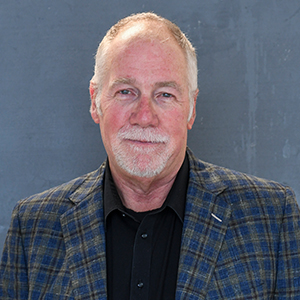Who knew the “terrible twos” would set a person up for their future existence in the professional world? It’s a formative time in a child’s life, when they start to express social and emotional cues. As the child becomes an adult, individuals develop social and emotional intelligence—both of which have strong roots in their childhood years.
Social intelligence and emotional intelligence each have unique characteristics. And it’s important to understand them both individually so business leaders, managers, and employees better comprehend how they work together.
Going Beyond the Standard Understanding of Social and Emotional Intelligence (SEI)
One problem I encounter in my working life is the temptation to lean into the “standard” concepts within professional development. There are endless resources that cover the concept of social and emotional intelligence (SEI), but many provide only a surface-level interpretation.
At Human Emergence Group (HEG), we dig much deeper into social intelligence and emotional intelligence, as a key part of comprehensive professional development. I share the information below not just for edification purposes, but so you can incorporate real-time solutions that improve efficiency/productivity and ultimately add to your bottom line.
First, let’s start with emotional intelligence.
What Exactly Is Emotional Intelligence?
Emotional intelligence is really about fully understanding the emotions you’re feeling and expressing, primarily within yourself. There are five core emotions humans possess: fear, hurt, anger, sadness, and joy. Every other “emotion” is a manifestation of one of these five emotions. When someone is feeling anxious, that’s actually rooted in fear. Depression can be a combination of different core emotions.
Each emotion has a specific purpose. In our early ancestors’ time, fear signaled potential danger. It served as a pro-survival mechanism. Sadness, in the form of crying, is a real-time process of healing from hurt. The problem with not allowing an emotion to serve its purpose is that then those emotions get bottled up and pushed down.
For example, telling a child not to cry is an instinctual parental habit. No one wants to see their child hurt. Yet, it stunts emotional growth. The child is not allowed to experience the healing aspect. Another example is a reaction (or non-reaction) to something like humiliation when you were a child. If you weren’t allowed to get angry and express what you were feeling in the moment, it will carry throughout your life and ultimately come to the surface at some point.
In fact, 95% of adults’ emotional responses come from what happened in their early years of development as opposed to the current situation.
Importance of Emotional Intelligence in Leadership Roles
As a leader, you can see why it’s important to be aware of your emotions, understand where they are coming from, and mitigate your response. It’s also crucial to keep that in mind with others. In business, especially, leaders are constantly bombarded with “threats”—which then trigger an emotional reaction. By knowing what the true trigger is, perhaps something from your family upbringing, you can better respond to the situation at hand.
This emotional intelligence also helps you know when to contain versus express emotions, and up-regulate versus down-regulate. If you’re very emotionally charged, it may come off as anger. Containing and down-regulating provides a better environment for reason and relationships at work.
On the flip side, if you’re a leader who is very analytical and tends to contain your emotions, you may need to up-regulate to ensure you’re effectively communicating with your team. I think of Dr. Martin Luther King Jr.’s speech, “I Have a Dream,” where he knew exactly when to up-regulate and down-regulate in order to move the crowd appropriately; something that also involved social intelligence.
What Is Social Intelligence?
Business settings do not exist in a vacuum. Even in the Zoom era, social interactions are required to perform business functions. Social intelligence involves navigating those interactions in the best way possible. It relies on picking up certain clues such as eye movements or body language. Social intelligence also requires excellent listening skills—knowing when to sit back and listen and when to jump in with questions or comments.
Those in positions of leadership have a unique opportunity to shift the business environment by having more social awareness. In many group settings, one or two people talk most of the time. A socially intelligent leader knows to step in and ask questions directly to others.
These leaders also know when to recognize passive aggressive behavior. At the start of this blog, I referenced the terrible twos. Passive aggressiveness has strong ties to this time in a child’s life. It’s when they learn the word “no” and may have been punished for not adhering to their parents’ wishes.
Wanting to avoid punishment, the child starts to express passive aggressive behavior to replace the “no.” Perhaps by dressing slowly or lagging behind. They learn to find a way to say no without being directly punished. Passive aggressiveness then carries over to adulthood and the business world. An employee might be feeling anger towards their team leader but express it by making excuses for not getting their work done. “I had too much to do.” Socially intelligent leaders pick up on this behavior and find ways to mitigate it.
Optimizing Social and Emotional Intelligence in Group Environments
Every group has a purpose, whether it’s a book club or a boardroom. In order for that group to optimally achieve its purpose, its members need to optimize their social and emotional intelligence. If only one or two members of the group continually dominate, ignoring what’s going on around them (both socially and emotionally), the group can become dysfunctional. Ideas are squashed before they even have the chance to be explored or even spoken. Such an environment stunts productivity and efficiency.
Alternatively, when leaders heighten their social and emotional intelligence, they recognize dysfunctional attributes. They see the introverted person in the room and invite them to speak up. Every member becomes valued—and valuable to the group’s objectives.
I often analogize Michael Jordan and the Chicago Bulls from years ago. Coach Phil Jackson worked closely with Jordan to focus on the entire team’s performance, rather than his singular excellence on the court. The team became successful because they were working as a team.
How to Heighten Social and Emotional Intelligence
Social and emotional intelligence can be learned. I’ve been educating business leaders for more than two decades via a strategy called group process training. This approach involves really exploring what happens during group meetings; the behaviors members both exhibit and mimic.
Individuals can also work to heighten their emotional intelligence by becoming more comfortable truly feeling emotions. A simple approach is to put on a blindfold and assess what you’re experiencing within. This helps limit external distractions to feel emotions in your body. Speaking the emotion aloud strengthens your awareness of it. Performing this practice regularly can make a significant difference in just a few weeks.
Even individuals who have certain social and emotional limitations, such as those with autism spectrum disorder (ASD), can learn to overcome barriers and learn to improve social and emotional intelligence. It just requires a different approach—more of a cognitive learning process.
Another example arises from cultural norms. Filipinos are culturally trained to not look a more senior person in the eye as it’s considered disrespectful. However, continuing that practice in an American business setting can be construed as underconfidence or worse. Gender is another factor. Women have historically been less vocal in various settings (home, work, the classroom). While that has been changing, there’s still room for improvement.
It takes a concerted, collaborative effort to ensure both leaders and team members are given the opportunity to explore social mores and “traditional” gender roles. Not judge them, but consider how they might need to change for more efficient, productive business operations.
Improve Social and Emotional Intelligence to Reach Your Full Potential
Busy CEOs and other leaders may not prioritize improving upon social and emotional intelligence, because it always seems like there’s “too much to do.” Yet, without such knowledge, a group is less likely to realize its full potential. Leaders may be leaving a lot of money on the table.
At Human Emergence Group, we work with leaders to develop the social and emotional intelligence tools they need, so they can maximize business operations and results. If you’d like to learn more about how to improve upon these skill sets, or any element of effective leadership, we’d love to talk to you! Schedule a free consultation today.








